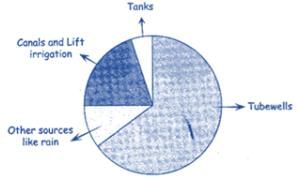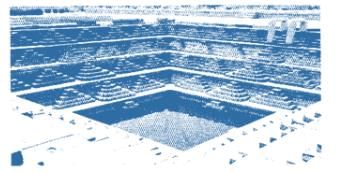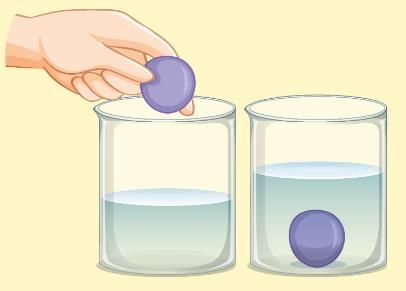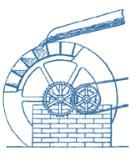Test: Water - 2 - UPSC MCQ
25 Questions MCQ Test - Test: Water - 2
"Titanic was one of the largest and luxurious ships that was called THE UNSINKABLE SHIP?. On April 14, 1912, however the ship struck an iceberg and early the next day it sank. Some 1500 people perished."
A: The ship sank.
B: The ship got pierced from one corner after hitting the iceberg and the water from the ocean started entering the ship.
C: Ship was floating on the ocean.
D: The fast moving ship hit an iceberg. Arrange the events in the order in which they took place.
The pie chart below shows the sources of irrigation of a small district Anantapur which is the second largest source?


I am everybody's need and there can be no life without me. Plants, animals and human beings all need me. I am used in almost everything from cooking to washing In science. I am the universal solvent. Scientists use me to mix in mixture I am precious and I should be conserved. Identify me.


The picture below shows a tourist spot in Hampi. This is a traditional well with multiple steps around it. The technique of rope and basket is not much seen here These are also called as:

The picture below depicts a method of lifting water that is still very prevalent especially in the rural areas. It lifts the water up from the ground and makes it available to the people. The technique used in this is ______ .

When a mixture of Salt + Sugar + Vinegar + Lemon juice + Soda was added into water, it resulted in the formation of a:
'A' is a kharif crop and is one of the most important staple foods in the world. Many cuisines and dishes are made using this crop. This crop requires abundant amount of water during irrigation. The fields in which it is grown are called paddy fields. Identify A.
Read the statements and choose the correct option.
Statement A: Oil and water do not mix.
Statement B: When heated, liquids contract.
Amit went to play on Saturday when it was raining heavily. He played football in the playground and got dirty. After a week, he started having continuous chills, fever and body aches. After consulting a doctor he was diagnosed with a disease that was transmitted by the bite of an infected mosquito. He was advised bed rest and medication for one week. Amit was diagnosed with which disease?
Look at the list and find out how many substances are insoluble in water?
[Sugar, Soap, Powder, Salt, Stones, Rice]
Directions: Read the sentences and choose the suitable option to fill in the blanks.
Water that is not in motion and is still at one place is called __(41)__ water. Stagnant water is the breeding ground for various insects and __(42)__.These mosquitoes, when bite humans, result in the malaria __(43)__. Stagnant water is more prevalent in the rainy seasons.
Directions: Read the sentences and choose the suitable option to fill in the blanks.
Water that is not in motion and is still at one place is called __(41)__ water. Stagnant water is the breeding ground for various insects and __(42)__.These mosquitoes, when bite humans, result in the malaria __(43)__. Stagnant water is more prevalent in the rainy seasons.
Directions: Read the sentences and choose the suitable option to fill in the blanks.
Water that is not in motion and is still at one place is called __(41)__ water. Stagnant water is the breeding ground for various insects and __(42)__.These mosquitoes, when bite humans, result in the malaria __(43)__. Stagnant water is more prevalent in the rainy seasons.
Directions: Read the passage carefully and answer the following questions.
The density of an object determines whether it will float or sink in another substance. An object will float if it is less dense than the liquid it is placed in. An object will sink if it is more dense than the liquid it is placed in. For instance a candle floats and a clay sinks even though the candle is heavier than the piece of clay. It?s not the weight of the object but, its density compared to the density of water that determines whether an object will sink or float in water.
Q. Which of the following determines whether an object will float or sink?
Directions: Read the passage carefully and answer the following questions.
The density of an object determines whether it will float or sink in another substance. An object will float if it is less dense than the liquid it is placed in. An object will sink if it is more dense than the liquid it is placed in. For instance a candle floats and a clay sinks even though the candle is heavier than the piece of clay. It?s not the weight of the object but, its density compared to the density of water that determines whether an object will sink or float in water. Two objects. Object A and object B are given. Object A is heavier than object B but still floats in water.
Q. Which of the following is the correct reason for it?
Directions: Read the passage carefully and answer the following questions.
The density of an object determines whether it will float or sink in another substance. An object will float if it is less dense than the liquid it is placed in. An object will sink if it is more dense than the liquid it is placed in. For instance a candle floats and a clay sinks even though the candle is heavier than the piece of clay. It?s not the weight of the object but, its density compared to the density of water that determines whether an object will sink or float in water. An object will ___ if its density is more than the density of liquid it is placed in.
Solubility is the property of a solid, liquid or gaseous substance called ___ to dissolve in a solid, liquid or gaseous ____ to form a homogeneous solution.
Which of the following are two primary forces which acting on an object when it is placed in water?
Amit, Rohan and Shalu decided to make a small pond for their fishes, made up of rubber. To see them floating was fun for them. For this they arranged a bucket half filled with water and made the fishes float in that bucket. If you were in their place what you would have done with the water filled in the bucket after taking the fishes out of it?
Amit had to leave for annual day preparation in his school. He was feeling hungry and wanted to have bread with butter nicely spread on it. But butter was very hard to cut with knife. So he left home hungry. As his elder sister how will you help him have his meal before leaving?





















